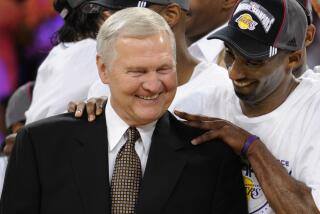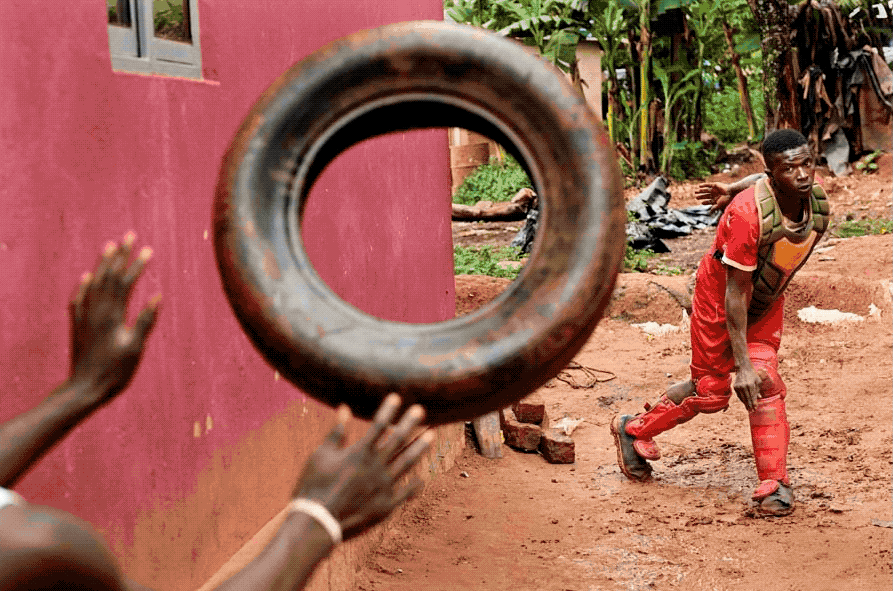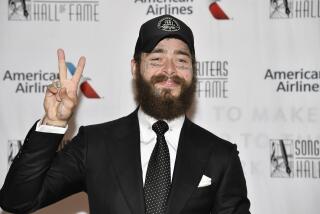Moses Malone dies at 60; one of greatest centers in history of pro basketball
When Moses Malone was growing up in Petersburg, Va., he lived in a four-room wooden house propped up on cinder blocks — a wobbly-looking structure that, in his last year of high school, was jammed with boxes full of scholarship offers from colleges vying for the 6-foot-10 basketball phenomenon.
Malone was the best high school player in the country. In a recruiting war, scouts from dozens of universities camped out in Petersburg, finally receding when he chose the University of Maryland.
Malone attended classes for a day and a half.
Hours into his college career, he accepted a $3-million, seven-year contract from the Utah Stars, leaping from high school to the pros in a move that was virtually unprecedented and widely criticized. He never looked back.
Malone became one of the greatest centers in the history of professional basketball. He was chosen three times as the NBA’s most valuable player and, by the time he left the game after 21 seasons, had scored 29,580 points, grabbed 17,834 rebounds and made more free throws — 8,531 — than any player ever had.
Malone, whose ferocious rebounding ability earned him the admiring nickname “Chairman of the Boards,” died Sunday in a hotel room in Norfolk, Va., where he was to take part in a charity golf tournament. He was 60.
Malone’s body was found after he failed to meet friends for a ride to the golf course, Norfolk police told the Associated Press. The cause of his death has not been disclosed, but authorities said there was no sign of foul play.
Earlier in the weekend, Malone had attended induction ceremonies for the honorees at the Naismith Memorial Basketball Hall of Fame in Springfield, Mass.
During Malone’s 2001 induction ceremony, his friend Julius “Dr. J” Erving recalled being asked by his bosses on the New York Nets in 1974 to welcome the new recruit to the league.
All of 23 at the time, Erving gave Malone an ominous little pep talk.
“Well, kid,” I said, “you’ve been swimming around in shallow pools for a long time. Now is the time for you to step into the deep waters of pro basketball — and I hope you can swim.”
Malone, known as a man of few words, responded with a faint smile.
After the ABA’s Stars collapsed financially, Malone spent brief periods with teams in St. Louis, Portland, Ore., and Buffalo, N.Y., before landing with the Houston Rockets in 1976. After six seasons, he went to the Philadelphia 76ers, where he propelled the team to the 1982-83 NBA Finals.
Asked how the playoffs would go, he became famous in Philadelphia for his concise prediction of three four-game sweeps: “Fo’, fo’, fo,”’ he said.
When Philadelphia beat the Lakers for the championship, he acknowledged that his forecast had been a little off.
“We had to settle for fo’, five, fo’,” he told reporters. “But that’s all right. We’ll take it.”
Malone played for eight NBA teams in all. He mentored a number of players, including onetime 76er Charles Barkley.
“I will never know why a Hall of Famer took a fat, lazy kid from Auburn and treated him like a son and got him in shape and made him a player,” Barkley said in a statement. “Every time I saw him I called him ‘Dad.’”
Moses Eugene Malone was born March 23, 1955, and grew up poor. His father had left his mother, a nurse’s aide and food plant worker, when Malone was 2.
When he was 13, Malone started playing basketball nightly, going one-on-one until 2 a.m. with his friend Gut (named for his ample abdomen) Johnson. His mother never worried about his late hours, he told Playboy in 1984.
“She knew I wouldn’t get into no trouble playing ball,” he said. “The only trouble I had was I kept wearing out my shoes.”
Malone led his high school to 50 consecutive victories and two straight state championships. While the ABA imploded, Malone’s career was in high gear. By his late 20s, he was earning $2.2 million yearly with the NBA’s 76ers. He reportedly was the highest-salaried athlete in America — and one of the hardest-working.
“I watch tapes of our games to see how hard I’m playing,” he said in the Playboy interview. “I wanna see tension in my eyes. I wanna see me sweating and getting angry out there — if I don’t see that, it gets me mad. If I see myself relaxing, or laughing and smiling during a game, I say, ‘Heck, I ain’t doing my work.’”
Malone was like “the basketball equivalent of blunt-force trauma,” Houston Chronicle sportswriter Michael Murphy wrote in 2001. He was “a foundry worker among ballet stars.”
Dogged by injuries, Malone retired from the San Antonio Spurs in the 1994-95 season, with just 17 games under his belt. He returned to basketball as a consultant for the 76ers in 2005.
Malone was divorced from Alfreda Gill in 1992. His survivors include sons Michael and Moses Jr.
In the relatively few interviews he gave, Malone said he never regretted not going to college.
“The Lord made some people to be engineers,” he told the New York Times. “He made some people to be doctors. He made me to be a great basketball player.”
Twitter: @schawkins
Times staff writer Broderick Turner contributed to this report.
More to Read
Start your day right
Sign up for Essential California for the L.A. Times biggest news, features and recommendations in your inbox six days a week.
You may occasionally receive promotional content from the Los Angeles Times.







